Home » Hunting Dogs » The Curly-Coated Retriever
The Curly-Coated Retriever
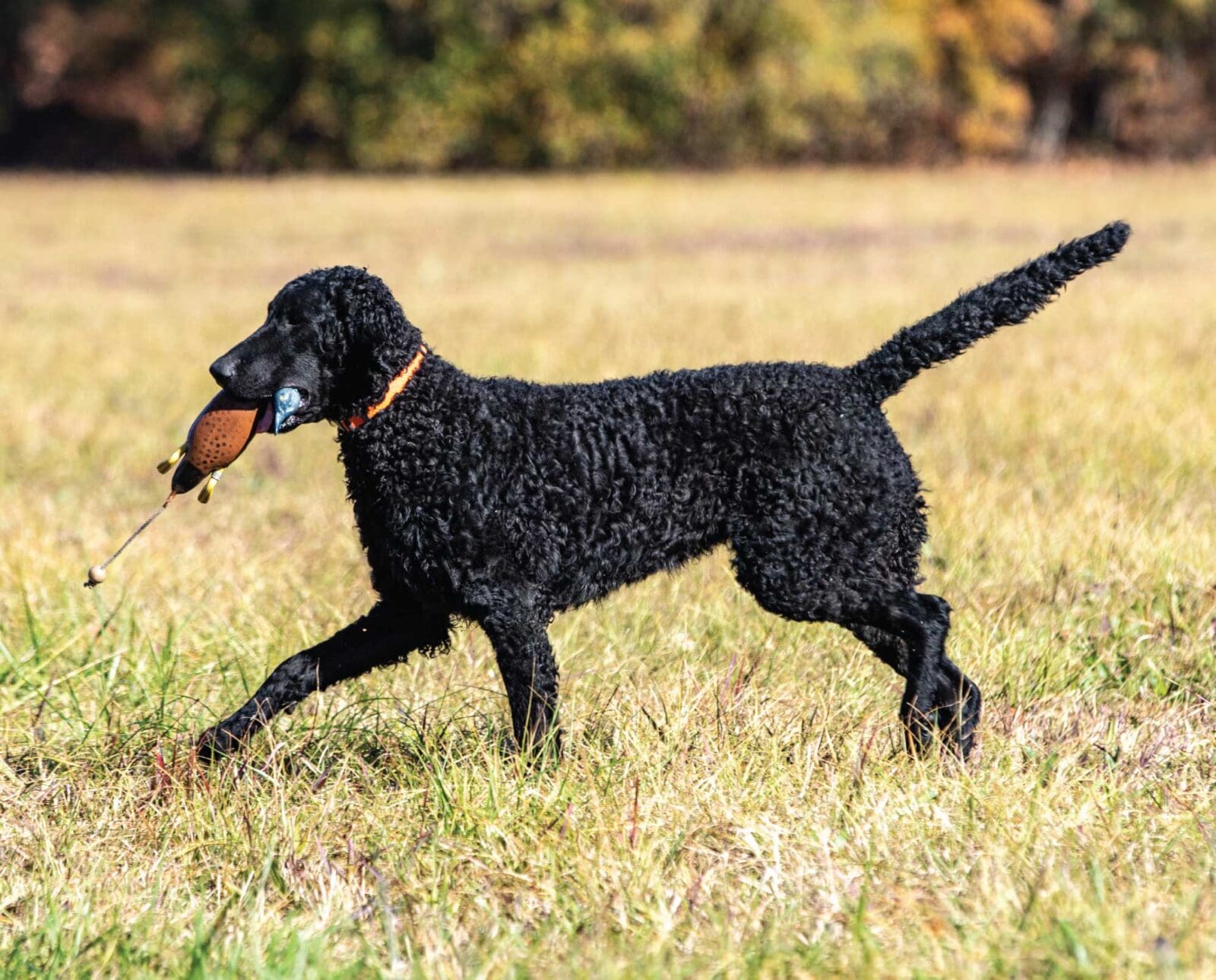
Janean Marti lives with her husband and six Curly Coated…
The Curly-Coated Retriever is the first retriever developed in history but lost out to more popular retrieving dog breeds over the years.
If you were to ask a bird or rabbit hunter in nineteenth century England which dog he would prefer to accompany him, the answer was often a Curly-Coated Retriever. That may surprise you, given the rarity of the Curly today. Hunters in the 1800s knew the Curly-Coat as a persevering, talented, hardy hunting dog who could handle both fur and feather in upland and waterfowl work. The Curly was also useful in a secondary role as a guard dog.
Listen to more articles on Apple | Google | Spotify | Audible
The Curly-Coated Retriever owes much of its early popularity to the simple fact that it was the first retriever breed to be developed. While the Wavy-Coat Retriever was being developed around the same time, most canine historians give a slight edge to the Curly’s claim of being the oldest by a few years. In the nineteenth century, guns were increasingly more accurate and accessible and retrievers were the up-and-coming canine specialists. With more accurate guns, hunters could shoot birds from much longer distances. Shooting no longer required a pointing or setting dog to range far afield and hold a bird on point while the hunter hurried to get close enough for an accurate shot.
By 1860, the Curly was breeding so true to type that the breed was given separate class status at the first English dog shows. It would be more than 40 years before Labradors and Goldens were given separate breed recognition. And if you page way back into Labrador and Golden pedigrees, you will find Curly-Coated Retriever ancestors.
Men who made their living by harvesting game became some of the earliest Curly-Coat breeders and advocates. Poachers and gamekeepers, commercial market hunters and sportsmen alike valued the Curly-Coated Retriever for its courage, keen intelligence, and trainability. Be it snipe downed in a marsh, rabbits running a farmer’s field, or ducks swimming a long lake, the Curly-Coated Retriever could handle all with conviction.
Don’t take my word for it. History has left us with accounts from men who traveled the meadows and marshes, seeking game and birds, with a Curly at their side.
Snowden Slights: The Great Yorkshire Waterfowler take on the Curly-Coated Retriever
In the mid 1800s, commercial waterfowl hunting was excruciating, back-breaking work. Grueling day followed grueling day and the hunter would sometimes sleep on shore or in his boat rather than row the miles back to home. Long days and nights didn’t necessarily mean success either.
There were nights of returning home after days on the marsh with an empty game bag and being “…half-dead from lack of food and sleep, wet-to-the-skin and half frozen,” the legendary English market hunter Snowden Slights said.
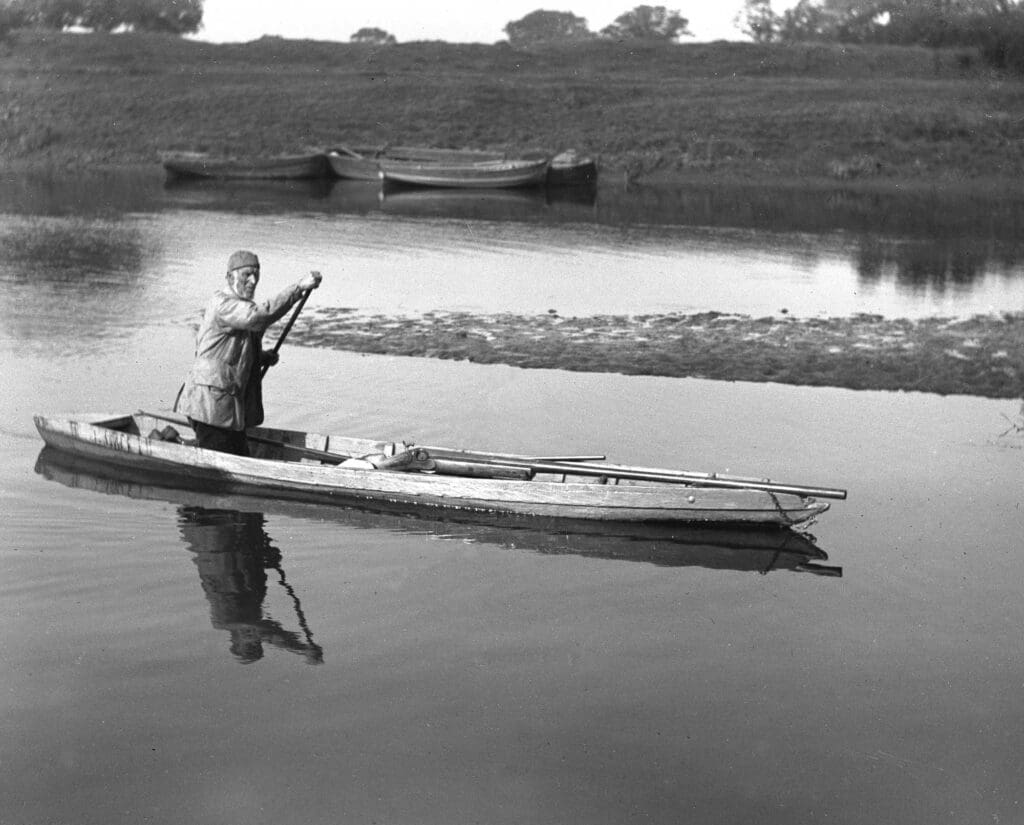
Born in 1830 at East Cottingworth, Yorkshire, England, Slights learned the craft of market hunting from his father. At age nine he left school to begin his waterfowling career and, by age fifteen, he was hunting solo. His was a hardscrabble life, marked by hard work and poverty; his life and fortune were often determined by the vagaries of weather, the whims of duck flocks, and the fluctuations of commercial game prices.
Throughout his more than 70 years of market hunting, he partnered with dogs to help him recover as many birds as possible in order to pinch out every available pound and shilling. His preference was for a Curly-Coated or Flat-Coated Retriever, with a slight nod to what he considered the superior hardiness of the Curly.
The job description for the dog was a unique one. Slights mounted his 140-pound punt gun in the middle of his 34-inch-wide sneak boat. The barrel of the 10-foot gun extended beyond the prow of the boat. The curly dog huddled beneath the giant gun, settling into the belly of the boat, which was a mere ten inches deep.
As Slights rowed or poled silently through the long, vegetation choked marsh channels, the dog had to lie absolutely still and silent beneath the gun, body extended, head down, never flinching. Some days he might have to hold this pose for hours at a time.
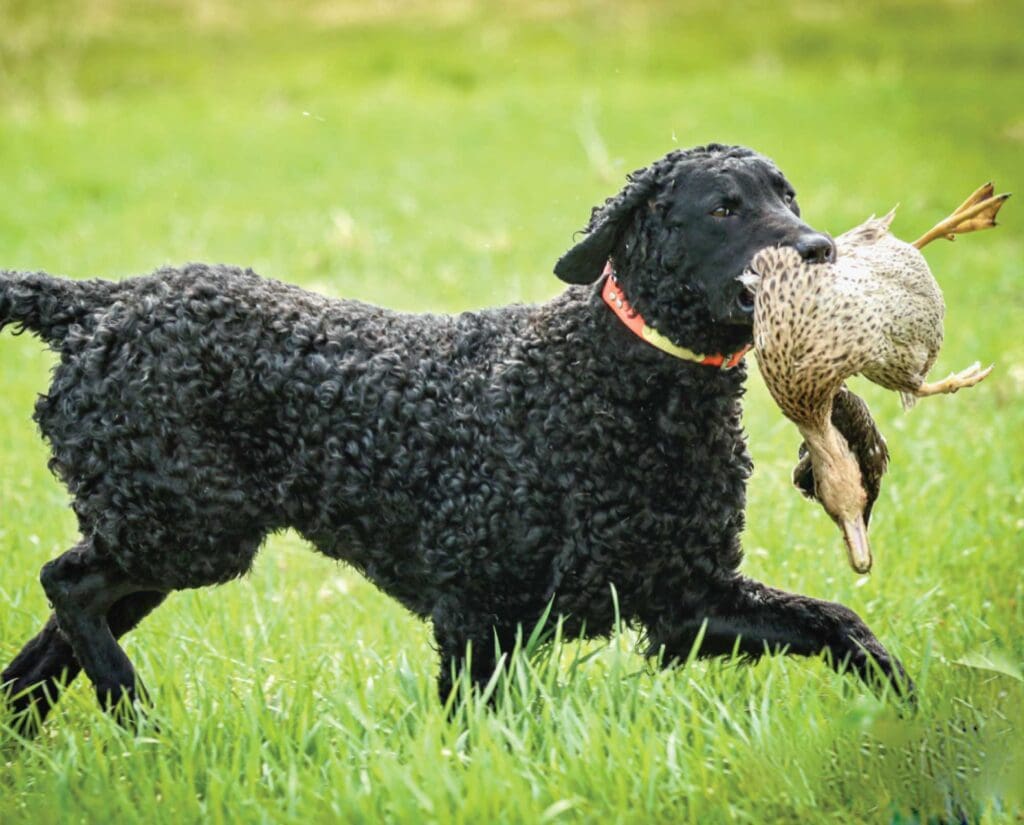
Slights said a market hunter’s dog “…must be quiet of tongue, of body, and absolutely without a trace of gun shyness. It must retrieve any kind of fur and feather, the latter invariably through water, and, lastly, it must retrieve quickly to hand without any fuss.”
After the giant gun boomed, killing 10-40 ducks at a time, the dog had to slip over the gunwale upon command to recover dozens of birds to hand. To do this day after day during a long waterfowl season in icy cold, choppy water or during a cold, hard rain, the Curly must be courageous, bold, and tough inside and out. The giant punt gun may have been Slight’s primary weapon, but the dog’s role was crucial in ensuring that every valuable bird or fur-bearing marsh critter was collected.
A Curly-Coated Retriever was ideal for the job. Courageous with a coat of curly armor, Curlies were known—and still are—for being able to button down their excitement when required and then ramp back up for a find, a flush and retrieve, or a long swim after a crippled bird.
Although Slights tried many different types of dogs, including spaniels, he said the Curly and Flat-Coated Retrievers were more tractable than spaniels and had temperaments more suitable to the tasks at hand.
Henry Coleman Folkard: Sportsman, Duck Hunter, Boating Expert, and the Curly-Coated Retriever
About the time that Slights began his solo market hunting career at age 15, a sportsman who loved all things wildfowl and boating published a book in praise, not only of the pursuit of ducks and geese, but also of the hunting talents of Curly-Coated Retrievers.
Sailboats, sneak boats, row boats, yachts—London lawyer Henry Coleman Folkard loved them all, along with seas, lakes, rivers, marshes, and all the critters swimming thereon. His book, The Wildfowler: a treatise on ancient and modern wild-fowling, historical and practical, is one of the first ever devoted to all manner of waterfowl hunting, methods, supplies, and duck dogs.
Without a doubt, the Curly-Coated Retriever was the best of the duck dogs to be had in England, particularly, according to Folkard, for those wildfowlers who had no access to a boat and were forced to hunt from shore. He wrote that the wildfowl shooter’s dog must “keep to heel” when required, not chase or give tongue, and obey its master’s verbal or hand signals and directions at all times.
The dog “must also possess fine courage, and be ready and willing to dash into the water after a winged fowl on the coldest days of winter,” he wrote. “The best bred dog for the purpose is the Curly-Coated Retriever. Newfoundland dogs are used for this sport by many wildfowl shooters; but, generally speaking, they are too large.”
Curiously, Folkard said the Curly was less inclined to create a mess in the boat, too. That might cause pause for some readers, considering the density and texture of the coat, but a Curly is unlikely to pick up burrs, seeds, or mud while engaged in water work. The tight curls can also trap air between the skin and the coat, creating a sort of natural insulation against the cold.
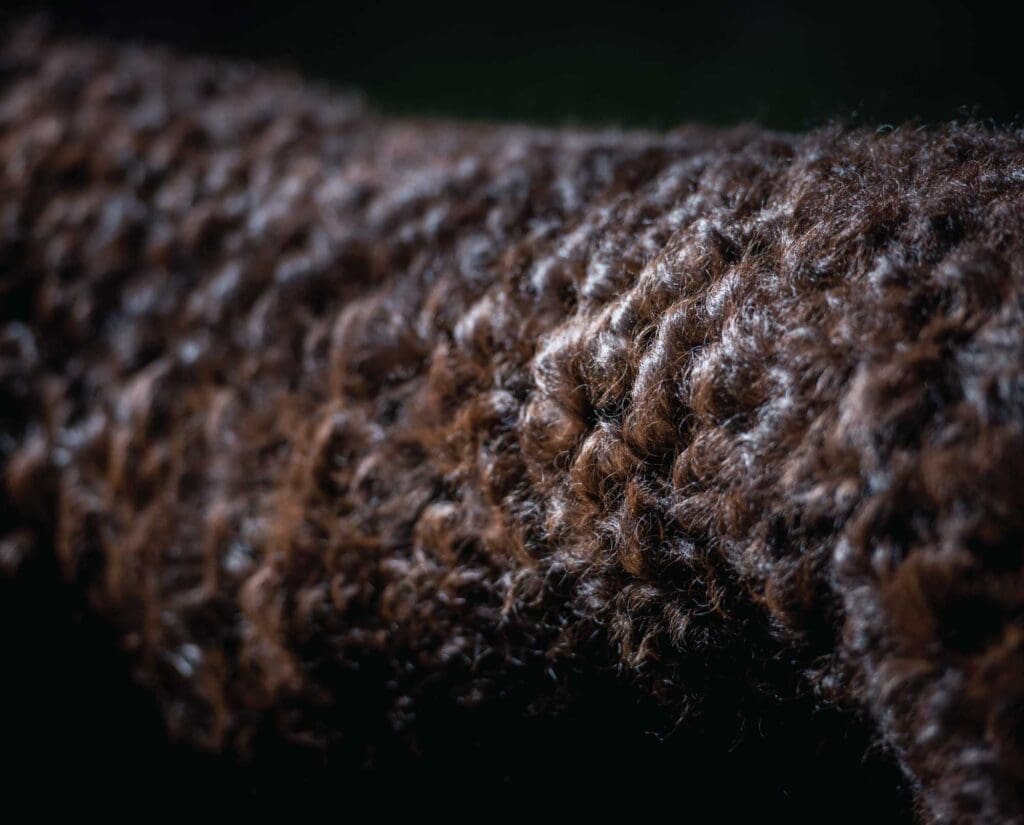
“The Curly-Coated Retriever, from the nature of its skin, is far less dirty; and, when carefully trained to the sport, is the best breed of dog that can be had for the purpose,” Folkard wrote.
His favorite dog, a parti-colored Curly-Coated Retriever named Sambo, seldom lost a winged or wounded bird. The dog accompanied him on hundreds of shooting trips and would obey signals to pick up wounded birds before dead ones. Retriever trainers these days would call Sambo a dog who was trained on blind as well as marked retrieves.
Sambo was more than just a retriever of game to Folkard, too. “Would that all my friends were faithful as that dog,” he exclaimed in his book.
Sambo was born sometime during the early development of the breed, probably in the 1830s or early 1840s. As an early example of the breed, he did not sport the solid black or liver coloration now required by official kennel club standards worldwide. Around the 1850s and 1860s, many breeders of various breeds established a preference for solid-colored dogs as a mark of being purebred dogs. The history of the Curly-Coated Retriever records dogs with white patches, solid white, and solid yellow dogs, but only solid black and solid liver (with a few white hairs) are accepted today.
Sambo’s coloration was likely a result of an English Water Spaniel ancestor, as the now-extinct water spaniel is believed to be a Curly ancestor by nearly every respected canine historian.
Nightwalkers: The Poacher and the Curly-Coated Retriever
A decade or two after Folkard’s book was published, another Curly-Coated Retriever enthusiast chose to walk by night, a Curly at his side, down dark paths and through moonlit, thick woods, facing dangers more threatening than those of the market hunter or the sportsman.
The self-described King of the Norfolk Poachers, Frederick Rolfe, began his nighttime poaching forays as a way to snare a rabbit or maybe a couple of pheasant to feed his family. By Rolfe’s birth in 1862, Curlies had become a well-established
breed that was shown at fancy dog exhibitions, found on many a gentleman’s country estate, and housed in gamekeepers’ kennels across England.
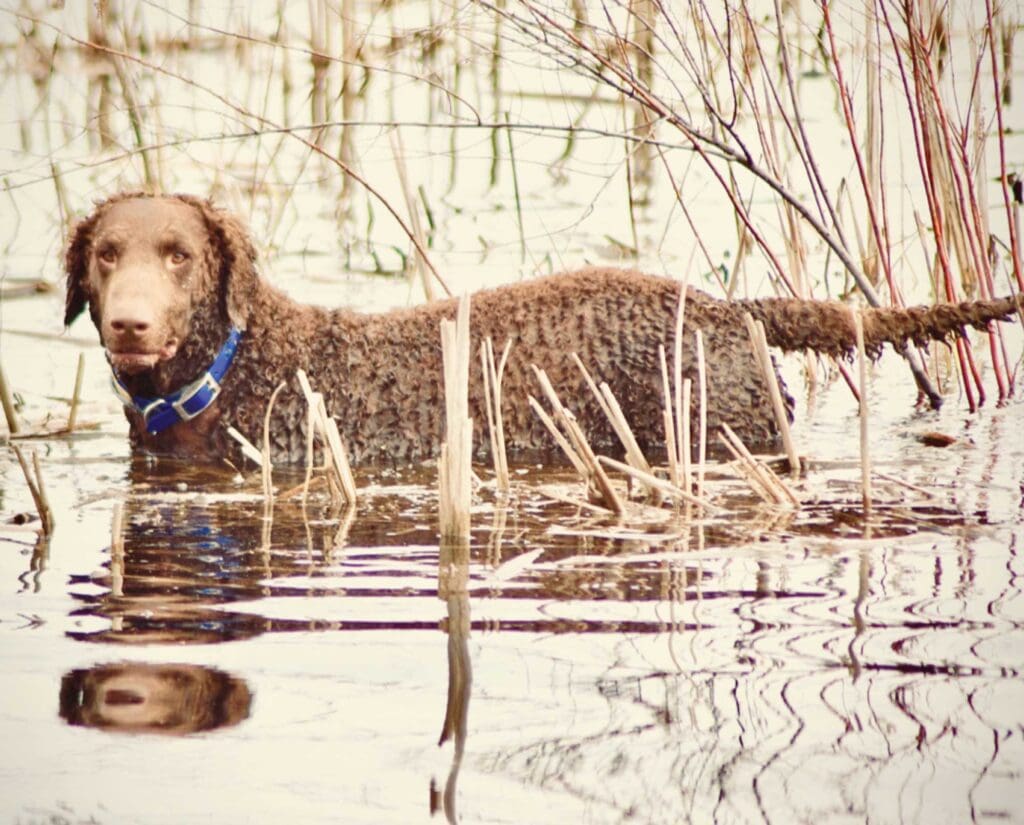
Rolfe’s first encounter with a Curly-Coated retriever was probably at a gamekeeper’s kennel. Although his poaching activities began when he was just a boy, Rolfe quit the poaching life for a time and took a job as a gamekeeper. Eventually, though, he was lured back to the intrigue of poaching for the thrill of chasing and being chased, and the danger inherent in it all. He loved the planning of the deceit and outwitting the gamekeepers and sheriffs who patrolled for poachers. When the game was afoot, the King of the Norfolk Poachers chose a Curly-Coated Retriever as his companion in deception.
“I do not think there is a more sencible (sic) dog than the old English curly coated retrever (sic),” Rolfe wrote in his memoirs. “It is hard to beat him as a sporting dog.”
It’s no surprise that the same traits that market hunter Snowden Slights valued in Curlies—the silent work, the willingness to work on signal, the hardiness and courage—would also suit a poacher. Poachers were often chased, shot at, arrested, jailed, and even hanged. A poacher would need a dog to work silently, swiftly, and without a lot of direction; a dog to lie still among the bushes as patrollers passed by, and a certain toughness to both warn and guard.
Of one of his retriever bitches he trained for night gunning he said, “I well remember goen (sic) in a wood not far from Bungay. I shot a bird from a tree and the bitch brought it to me growling. There were two keepers within 20 yards of me, but I simply crawled in the wood and laid down and they passed me by.”
Rolfe wouldn’t always be so fortunate, however. He was arrested and imprisoned a couple of times for poaching. His dogs were trained to drive rabbits into nets. The dog had to find and flush the rabbit, then run so fast as to be able to turn the rabbit and drive it into a net stretched across two posts. Rabbits were a meaty and important food source in rural England in the 1800s and a dog that could catch up to them and turn them into a net was a very valuable tool.
At least one of Rolfe’s Curly Coats would also bring back gamebird eggs, unscathed and uncracked. I can attest this gene has been passed down to the current generation of Curly Coats as my dogs have frequently brought me turkey eggs and, this past spring, one of my bitches brought me a large, beautiful goose egg. Rolfe’s dogs one-upped mine, because one of his bitches often brought back two plover eggs in her mouth without cracking them.
Winter duck hunting with the same bitch one night, Rolfe shot a duck that sailed over a large dike. When his Curly gal started to bring it back, she walked onto the ice but the ice broke in the middle of the dike and the dog fell into the deep water.
“She could not get a foothold, and was like to go under the ice, so I got down to the edge to help her and the side gave way and there I was up to my neck in freezing mud and water and stuck fast,” Rolfe wrote. The dog struggled onto the ice, freed herself, and then returned to Rolfe. He was able to grab her collar and part of a bush and pull himself out. He returned home unharmed but, writing his memoirs in his 70s, opined he might well be paying in ill health for the icy water tumbles he took in his younger days.
In his tough old poacher’s heart could be found spots of tenderness for his Curly-Coated retrievers. After his bitch had saved him from suffocating in the freezing mud and water slide, they were hunting alongside a railroad track when Rolfe’s boss shot at and wounded a hare. The dog went after it and was killed as she ran onto the tracks and was hit by a train.
He lamented her demise. “You may be sure I thought a lot of her (after having saved his life), but like everything we human beings set the most store by some thing is shure (sic) to happen to them…I felt the loss of her as much as I would of a friend. I could never get her equal for sagasity (sic) and sence (sic).”
It appears he had no regrets in choosing the poaching life. He concluded his memoirs in this way: “If I had my time to come over again I still would be what I have been: a poacher. So, I remain, Gentlemen, The Ex-King of the Norfolk Poachers.”
Gamekeepers and Curly-Coated Retrievers
In a bit of irony, the poachers working with Curly-Coated Retrievers were often chased by gamekeepers with their own Curly-Coated Retrievers. If evidence of a poacher was found, a gamekeeper might unleash his Curly pack to find or at least scare off the intruder.
Curly-Coated Retrievers could be found on almost every large estate in England in the late 1800s and early 1900s. They were often the personal dogs of the keeper, although many estate owners kept a few Curlies for breeding as well.
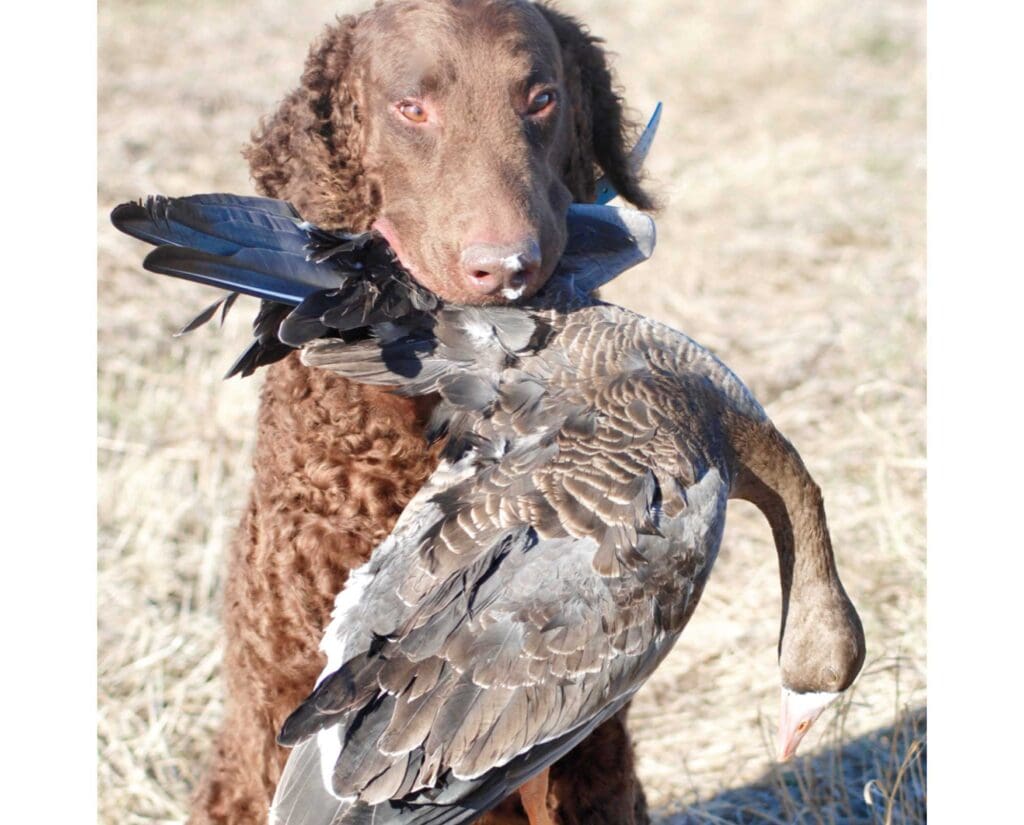
After an estate shoot, in which the spaniels and other retriever breeds would be given their chance to find birds, many a gamekeeper would bring out one or two Curly-Coated Retrievers to pick up all the cripples and dead birds that the other dogs had missed.
Here’s how Norman Mursell, a gamekeeper of more than 50 years for the Dukes of Westminster, described one such situation in his autobiography Come Dawn, Come Dusk: Fifty Years a Gamekeeper.
“Most of the dogs used in those days (late 1920s and early 1930s) were black Labrador Retrievers as the yellow only became popular much later. Several keepers had Flat-Coated Retrievers, dogs seldom seen these days, but I had at the time a black Curly-Coated Retriever named Sam. He was particularly good at finding snipe, or for that matter almost anything so I frequently had the job of remaining behind at a pit to find any snipe that hadn’t been picked up,” Mursell wrote.
“I remember once, at a pit which was particularly good for snipe and had a large area of the type of rush the birds favoured (sic), having to remain behind to find a jack snipe. Everyone thought all the birds brought down had been accounted for, but the Duke was insistent that one still remained and it was a jack snipe. This variety of snipe is the smallest of the breed and not easy to find on grassland, let alone in thick rushes.
“A couple of dogs had hunted the pit pretty well, picking up several birds, and of course this made it less easy for Sam. However he started working the pit systematically, as good dogs will, and after about ten minutes started to scratch away at the rushes until the mud underneath started to fly. Eventually he poked his nose down into the mud and his tail started to wag. Then he straightened himself up and picked his way to me with his head in the air and his muzzle covered in mud. I opened his mouth and there was a snipe—a jack snipe at that! His Grace was very pleased, to his credit he did not say, ‘I told you so.’”
There is a sense of pride in how Mursell relates this incident. Not only did his dog perform admirably in locating a difficult bird to find that other dogs could not, the dog proved Mursell’s boss, the Duke of Westminster, correct in remembering a bird was still down.
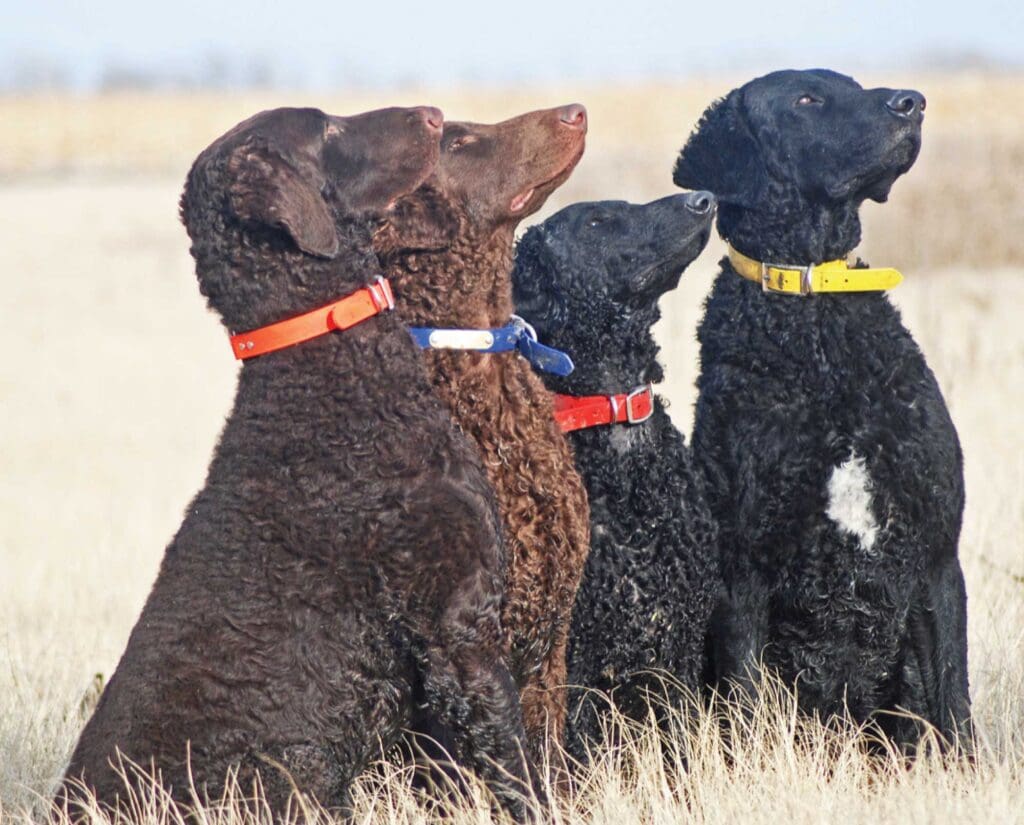
Genetic Origins of the Curly-Coated Retriever
One look at a Curly-Coated Retriever and some observers automatically think the breed is a Poodle mix or at least has Poodle ancestry. That is totally incorrect, despite what you may have read elsewhere.
There has never been any evidence of a Poodle ancestor in the breed, only supposition by some early authors. Most Curly breeders and owners know the theory that a Poodle cross was used in the late 1800s to “tighten up the curl” is complete balderdash. A cross to a Poodle would in fact do just the opposite. A Curly’s coat does not continue to grow like a Poodle’s coat and the curl is much tighter than that of a Poodle.
Genomic research has given us much new information on breed ancestry and the Poodle and Curly Coat are far separated on the genomic map. The Curly-Coated Retriever’s closest ancestor on the genome map is actually the Irish Water Spaniel. That comes as no surprise to those who know the Curly well, for the breed often excels in upland hunting.
There were once two strains of Irish Water Spaniels—the Northern and Southern varieties. Some were liver but others were solid black. The Curly and the Irish Water Spaniel probably share a common ancestor in the now-extinct dog breed the English Water Spaniel, a dog of some repute in waterfowling beginning in the late 1700s and up into the late 1800s when the breed faded out.
An intriguing breed thought to have contributed to the Curly-Coated Retriever gene pool is the now-extinct Llandiloes Setter. This breed, usually cream or white in color, is said to have had a coat so tightly curled as to resemble a Cotswold sheep. A wealthy landowner and early Curly breeder, R. J. Lloydn Price, owned a 17,000-acre estate in Wales located just 60 miles from the village of Llandiloes, so potential breeding stock was close by.
The Curly-Coated Retriever Today
Why would a breed considered so talented in the pursuit of game in the 1800s have
seen its popularity decline and its position as the retriever of choice be overtaken by the other retriever breeds? Of the six retriever breeds—the others being the Labrador, Golden, Flat-Coat, Chesapeake Bay, and Nova Scotia Duck Tolling Retriever—the Curly is last in registrations in North America. They are also losing popularity in their native England and are listed by the British kennel club as one of England’s vulnerable breeds.
If one reads the accounts of the revered dog men and breed chroniclers, the old bugaboo of show ring people breeding solely for appearance is theorized as contributing to the decline of the breed as a field dog. Some historians specifically mention pursuing the perfect coat above all other traits.
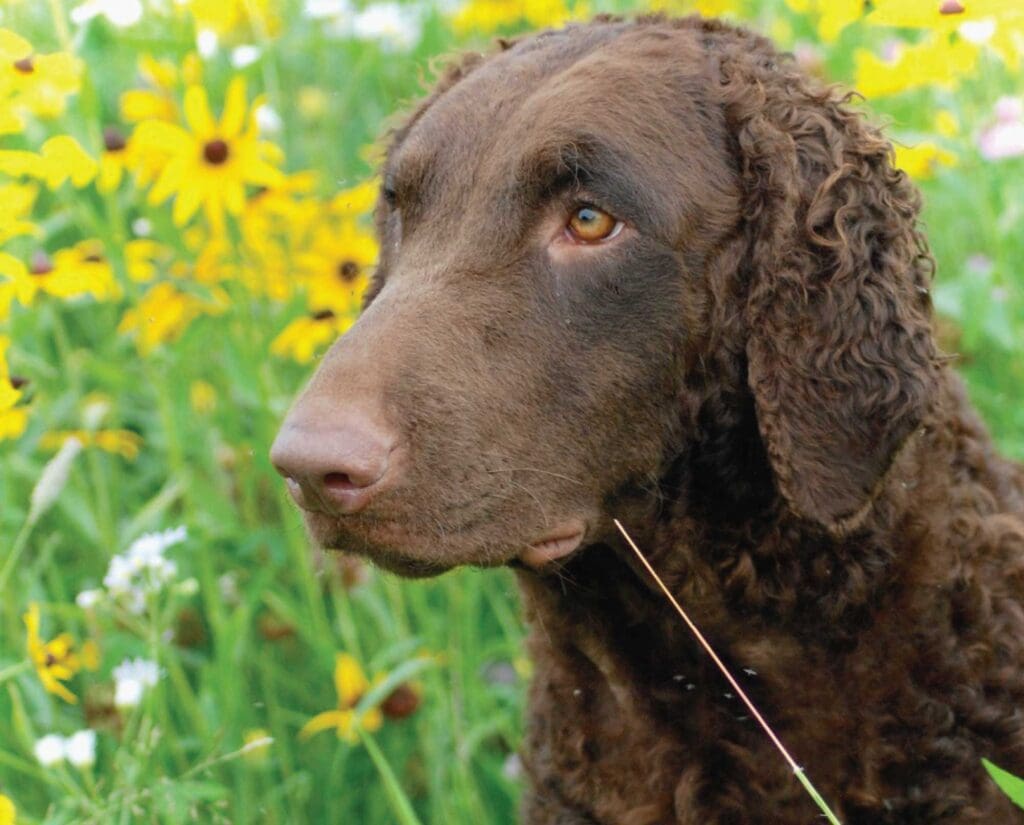
Perhaps prioritizing conformation above working ability did contribute to the decline in popularity, but there are pockets of very talented working Curlies in the world today. A couple of Curlies imported to the United States in the late 1930s went on to successfully compete in field trials, even winning stakes on occasion. Within the past ten years, another Curly has won a couple of U.S. field trial qualifying stakes. Australia and New Zealand have always loved a good Curly Coat and there have been many Australian and New Zealand field champion Curly Coats.
Hunt tests, with lower competitive costs and less technical tests, have brought out some Curly owners and breeders who found field trials and field trial training prohibitively time consuming and expensive. On a percentage basis of registrations vs. titles, Curly Coats are actually quite well-ranked in hunt test competition.
Traditional training methods don’t suit all retriever breeds. The Curly Coat was traditionally valued for its ability to work independently with minimal direction from its handler. This independence can be of value in some hunting situations, particularly upland work, but be somewhat of a deterrent in the field trial or hunt test upper level stakes where handler control is valued more than natural hunting talent.
The bottom line is that well-bred Curly Coats can be stunningly talented natural field dogs if care is taken to find a breeder who understands hunting and who prioritizes field ability. The reward for such effort is a devoted companion at home and a capable hunting partner in the field.
Janean Marti lives with her husband and six Curly Coated Retrievers in northern Wisconsin. For more than three decades, her Curlies have hunted pheasant, waterfowl, grouse, and woodcock in six states. Janean was a founding member of the Curly Coated Retriever Club of America, was chairman of the committee that wrote the current American Kennel Club conformation standard for the breed, and also was the first Judges’ Education Coordinator for the club. Bred primarily for hunting, temperament, and health, Curly Coats bred under her prefix “Ptarmigan” have produced some of the all-time top field and show Curlies in U.S. history.





Wow, I’m in love! Thank you for the thorough and enjoyable article. Now I have to convince the husband….
As a lover of hunting, dogs, and history I absolutely adore articles like this one. Referencing books written by people that used the breed for both legal and illegal activities was interesting to read about. Plus the fact that you also pointed out myths about the breeds origins was also great. Almost everything I had read pointed to cross breeding with poodles at some point. This is why I keep coming back to this site to read new and re-read old articles. Great job!
Excellent reading. I really enjoyed it especially the part if the curly rescuing the hunter.
A very interesting and valuable reading. Thank you. I absolutely love this breed and have three plus an Irish Water Spaniel and a very well trained pug. The curly is such a calm breed, wonderful to train and now I am doing scent work
Such an interesting reading. I bought my first Curly 1997 and have bred them since 2005 always with the intent of improving (or keeping) the hunting ability.
I treasure this article. Thank you.